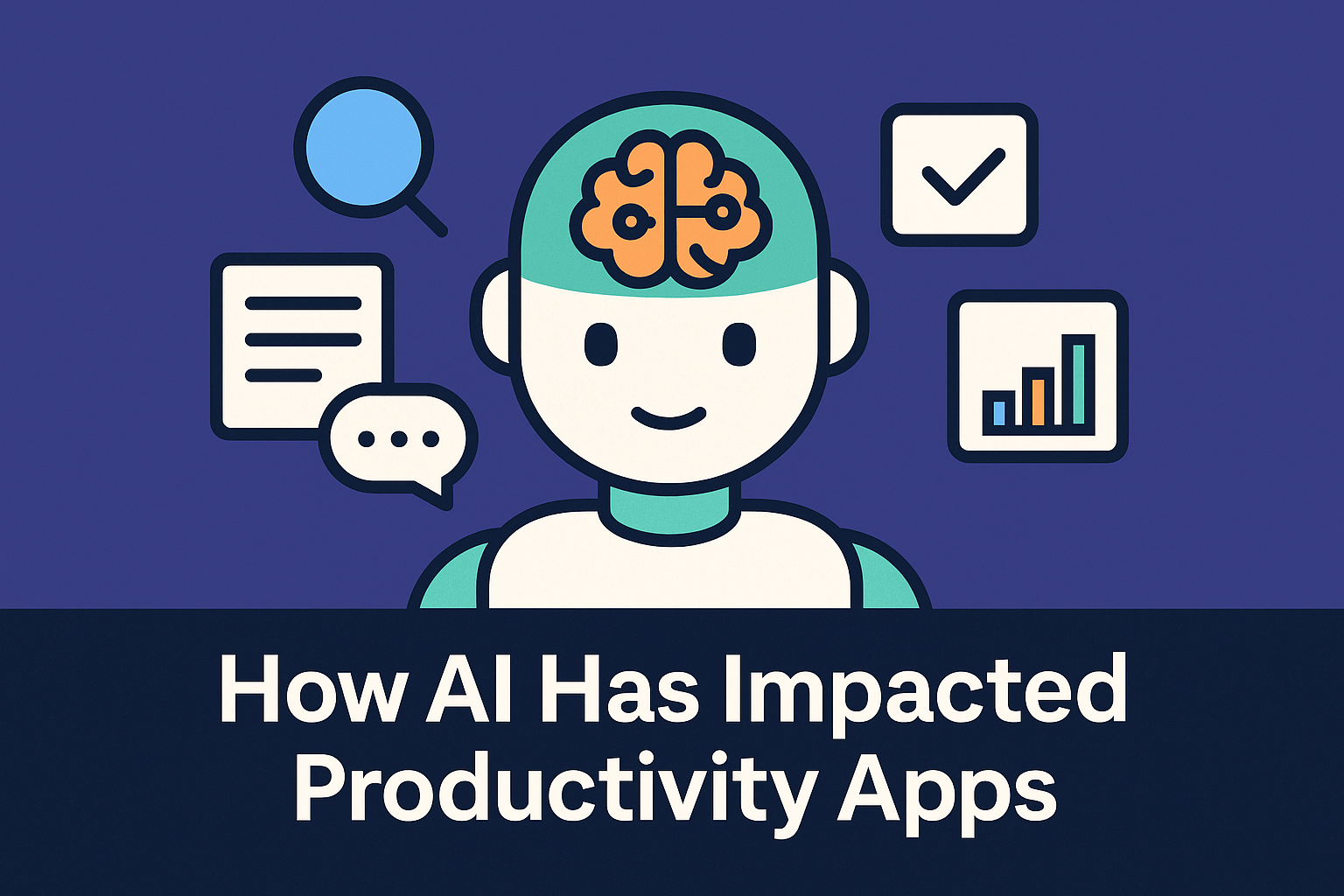How AI Has Changed Productivity Apps (and What's Next)

TL;DR
AI moved productivity software from passive record-keeping to proactive, context-aware assistants. We now get instant summaries, suggested action items, draft replies, auto-filled tables, smarter prioritization, and even lightweight "agents" that do work for us. Real-world pilots report meaningful time savings, while platform vendors embed AI directly in the tools people already use all day (Docs, Sheets, Gmail, Outlook, Slack, Teams). The next wave is agentic workflows that operate across apps with organizational context, strong security, and human oversight.
What actually changed
1) The UX flipped from "fields & forms" to "ask & act."
Natural-language prompts now create content, structure data, and take actions. In Google Workspace (Gemini), you can ask Sheets to create tables, formulas, analyses, and charts—or summarize files from Drive and emails from Gmail—without manual setup. In Microsoft 365, Copilot drafts, summarizes, and extracts tasks inside Word, Outlook, Excel, PowerPoint, and Teams.
2) Ambient summarization reduces information overload.
Slack's AI provides channel/thread recaps and daily digests so you "catch up" in minutes instead of scrolling for hours; it's being productized at scale and rolled into broader Slackbot upgrades.
3) Task & project tools got "next step" intelligence.
Todoist's AI Assistant can break big tasks into sub-tasks, rewrite titles to be actionable, and suggest what to do next; similar flows exist across modern PM tools.
4) Teams are experimenting with agents, not just assistants.
Vendors are shifting from "answering questions" to taking initiative—auto-triaging tickets, finding duplicates, routing work, and proposing owners. Linear's Product Intelligence is a clear signal of this agentic direction.
Is AI actually saving time?
- Macroeconomic view: McKinsey estimates gen-AI could add 0.1–0.6 percentage points to annual labor-productivity growth through 2040, concentrated in knowledge-work use cases.
- In-the-tools evidence: Public sector and enterprise pilots of Microsoft 365 Copilot report measurable daily time savings (e.g., minutes saved per day from summarization/search), with highest usage in Teams and strong user willingness to keep using the tool.
- Developer analog: Recent mixed-methods research on GitHub Copilot (a mature AI copilot category) shows productivity improvements and changed workflows—useful as a proxy for how embedded copilots shift day-to-day habits.
Bottom line: The signal is consistent—AI reduces "work about work" (searching, summarizing, formatting) and accelerates first drafts and prioritization. The exact ROI varies by role, data access, and training.
Five capabilities that went from "nice" to "normal"
Instant summaries & action extraction
Meet transcripts → bullets + owners; long email threads → TL;DR + next steps; issue threads → key decisions. (Slack AI, Teams/Copilot, Workspace/Gemini.)Write, rewrite, and reply in context
Draft status updates, client emails, and project briefs in the app you're already using—then refine tone or length. (Copilot & Gemini side-panels.)Auto-structure data
Generate tables, formulas, charts, pivot tables, and formatting on command in Sheets; similar features are spreading to other grid tools.Smart task decomposition & prioritization
Break a fuzzy task into steps, rewrite titles so they're actionable, and propose priorities—useful for both personal productivity and team triage. (Todoist AI; emerging across task apps.)Agentic triage
Automatically detect duplicates, suggest assignees/teams, and route work before humans even look. (Linear Product Intelligence.)
New operating model for teams
Live where people already work.
Adoption is higher when AI features are embedded in the suite you already use (Docs/Sheets/Gmail; Outlook/Teams) rather than "yet another tab." Google's expansion of Gemini into Workspace apps—and Slack's native AI—reflect this pattern.Data governance matters more than models.
The quality of outcomes correlates with access to well-permissioned internal context (docs, tickets, CRM). Slack, Microsoft, and Google emphasize enterprise-grade security and using your data without training public models.Change management beats feature lists.
Successful rollouts use champions, role-specific playbooks, and metrics (time to draft, decision latency, meeting load). Microsoft's own adoption narratives and third-party trials underline the importance of training and measurement.
The trade-offs and risks
- Hallucinations & over-confidence: AI can be confidently wrong. Keep a human in the loop for judgment calls.
- Context gaps: Without the right documents, access, or metadata, answers degrade.
- Cost control: Seat-based AI add-ons can add up; target the workflows with clear, recurring ROI.
- Skill drift: Teams should practice "verify & edit" habits so writing and analytical skills don't atrophy.
What's coming next (through 2026)
- Agentic workflows by default: Assistants that not only propose tasks but create them, schedule them, attach files, and nudge owners—safely, with audit logs. (Slackbot's evolution is a bellwether.)
- Richer multimodality: Automatic synthesis of PDFs, forms, slides, and recordings into briefs, trackers, and roadmaps. (Gemini's new PDF and Forms summarization.)
- Granular organizational memory: Enterprise search that understands your team's acronyms, decisions, and patterns—less hunting, more doing.
- Outcome-based pricing: Expect movement from flat AI add-ons to usage/feature bundles tied to measurable outcomes (time saved, tasks closed).
Where Self-Manager fits in
Self-Manager.net takes a date-centric approach—organize work by day/week/month first—so AI has a clean temporal spine for summaries, reviews, and analytics. Highlights:
- AI period summaries (day/week/month) plus instant, side-by-side AI chat for every table, so you can ask follow-ups on your data.
- Task generation from any text (turn a messy brief into a structured, prioritized table in seconds).
- Streaming responses for real-time iteration, with two modes ("Fast" for speed, "Thinking" for depth).
- Built on Google Cloud & Firebase for reliability and performance; frequent updates and straightforward pricing for individuals and teams.
This structure pairs the best of today's AI (summarize, extract, generate) with a simple planning rhythm that helps teams actually finish things—not just talk about them.
How to get value from AI—this week
- Pick one recurring meeting or channel and pilot AI summaries + action extraction.
- Automate one intake: have AI convert free-text requests into task templates.
- Standardize task titles ("verb + object + outcome"), then let AI break them down.
- Measure minutes saved per person per week; expand only where the ROI is clear.
Self Manager
Manage tasks, take notes
and upload related images
7 days free trial
Easily log in with your Google, Microsoft, Apple or X/Twitter account